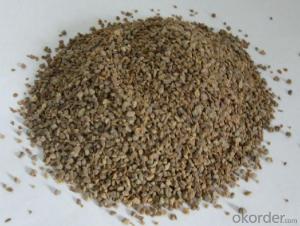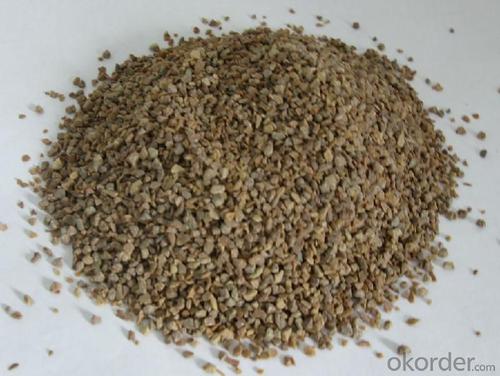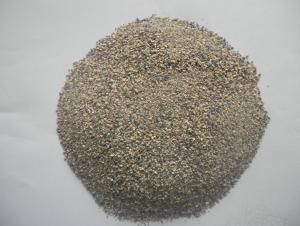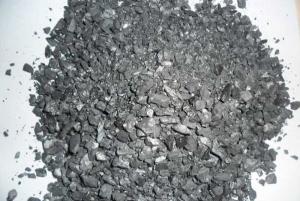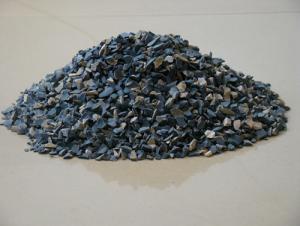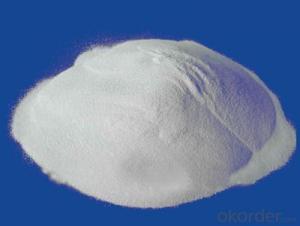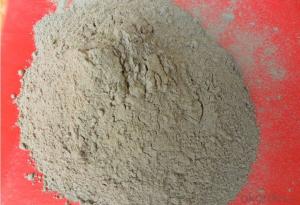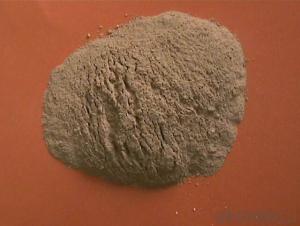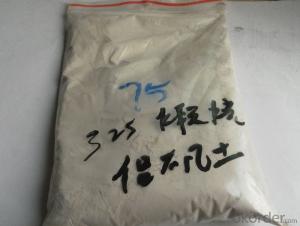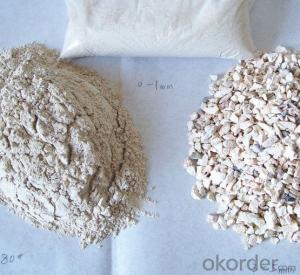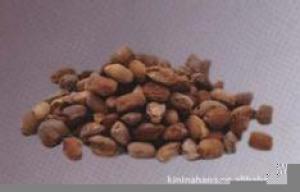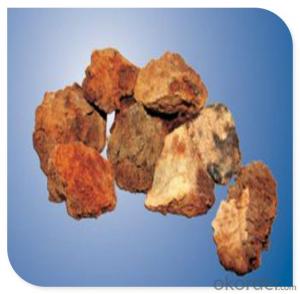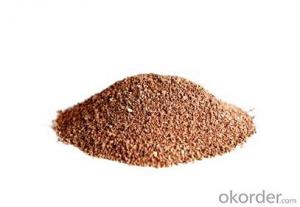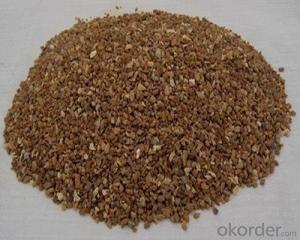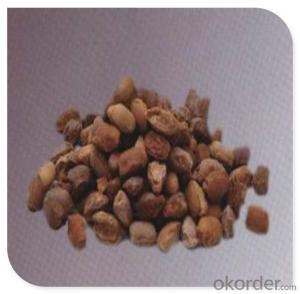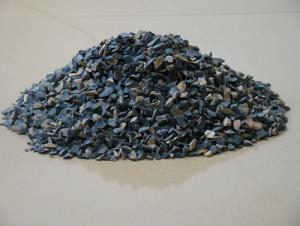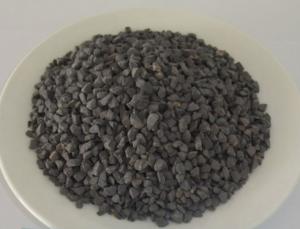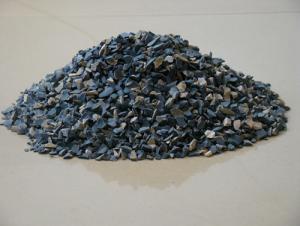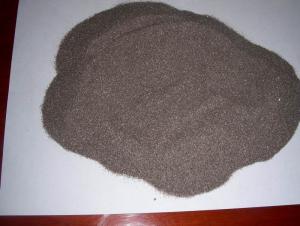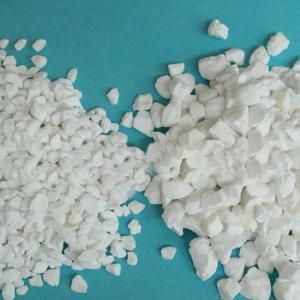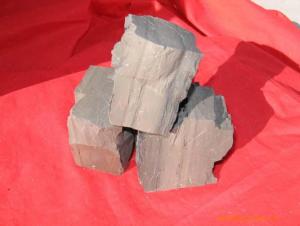Raw Materials for Refractory - Dead Burnt Magnesite Materials
- Loading Port:
- Tianjin
- Payment Terms:
- TT OR LC
- Min Order Qty:
- 20 m.t.
- Supply Capability:
- 1000 m.t./month
OKorder Service Pledge
OKorder Financial Service
You Might Also Like
Dead-burned magnesite is selected from natural magnesite, calcined temperature and the shaft kiln. It is the material of ordinary magnesia bricks, shaped and unshaped refractory products.
Specification
Application
It is used for steelmaking furnace bottom and ramming furnace.
In the same condition, using manganese or silicon to deoxidize separately, the burn out rate are 46% and 37%, but it is only 29% if using manganese alloy to deoxidize. So, it is used widely to smelting steel and its output increases faster than ferroalloy's, so has become an indispensable composite deoxidizing and alloy additives in steel industry. The silicon-manganese which contains carbon below 1.9% still is used to produce medium/low-carbon ferromanganese and semi-finished products of electro silicothermic process manganese metal.
- Q: what is the grading standards of external wall thermal insulation materials?
- external wall thermal insulation materials are divided according to Fire rating: 1, the combustion performance of insulation materials rates A. inorganic fiber spray coating, glass wool, foam glass, foamed ceramic , rock wool, foam cement, obturator perlite 2, the combustion performance of insulation materials rates B1: Extruded polystyrene board (XPS)after special treatment / polyurethane (PU) after special treatment, phenolic aldehyde, gelatine powder polyphenyl granule.3, combustion performance of insulation material rates B2. Molded polystyrene board (EPS), extruded polystyrene board (XPS), polyurethane (PU), polyethylene (PE), etc.
- Q: What is acid refractory material?
- In fact, with the content of zirconia refractory multiple theory should also be acid refractory
- Q: which kind of fire?bulkhead is better?
- General business fire endurance of two products are 3 hours. Organic fire bulkhead's main ingredient is organic material, which can be used in anti-corrosion and fireproofing cable tray. Inorganic fire?bulkhead's main ingredient is inorganic material, which mianly play a role of fireproofing. It's main ingredient is inorganic material, so it can't be used in acidproof and alkali resistant projects. Of course, the price of same amount organic fire?bulkhead in general is more expensive than the inorganic fire?bulkhead.
- Q: which kind of material should be used in fireproofing cabinet?
- Natural stone,marble. advantage: Colorful, soft texure, natural and diverse texture, easy to cut or engraving molding. Disadvantages: Because it is a natural formation, tiny loose crackle is easily folded, because the stone is porous material structure, if sewage and waste water permeate in the structure in the process of production, transportation or construction, it's difficult to clean and easy to crack. In daily cleaning, it is inevitable that there will be some residue left, and dirt is filled into crack under the wiping of rag and becomes a breeding ground for bacteria. 2, granite. advantages: Granite has big density and high hardness, with wear-resistant surface, it's one of the most common materials for family decoration. Compared with natural marble, it can be used in the materials of kitchen countertops, and granite has good anti-bacterial regeneration ability. Disadvantages: As the cabinet table material, natural stone is usually not very long, so in order to produce a long overall table (especially U-shaped, L-type table), it will certainly exist joints, which are also easy to hide dirt. 3, artificial stone. advantages: Artificial stone has richful lines and colors, and it can be comparable to stone, it's non-toxic, non-radioactive, easy to clean, and can be truly seamless splicing. it belongs to economic environmentally friendly material. Disadvantages: Artificial stone belongs to the processing industry, and has low technology requirements, The inferior products of many small companys are fulled in the market and damage customers' interests. There exist faded color,poor aging resistance,oil stain and other issues in affordable products.
- Q: Why does refractory need to add coarse firstly and then add fine aggregate?
- Binding agent can wrap particles and improve binding effect.
- Q: what are the requirements of fireproofing material?
- The producing process of fire and moth proof wood: firstly, put general wooden materials into solution with calcium, aluminum and other cations, then soak it into the solution with phosphate radical, silicate and other anions. Thus, the two ions will be carried out chemical reaction in the wood, forming a ceramic-like material, and intimately fill the voids of cells, so that the wood has the fireproofing and mothproof properties.
- Q: Can you tell me the classification of fireproof sealing material.
- Organic fireproof sealing material include: fire-proof sealing plate, foam sealing materials, flame retardant module, flexible organic plugging material, inorganic fire sealant, plugging and fire package, etc. Organic plugging material take organic materials as the adhesive with certain flexibility or plasticity when used. The product is thick liquid or cement. Inorganic plugging material take powder of solid inorganic material as the main ingredients, and admixture mixed use, with proper workability. Fireproof bag apply bag shaped object made up by fire-proof materia to large hole fire plug or cable tray fire compartmentation (fire package also called as refractory package or fire protection package). Fire modules is made up of fireproof material, which is a solid with a certain shape and size and can be easily cut and drilled, suitable for holes or fire-proof sealing of cable tray. fireproof sealing material is the plank made up of fireproof material, which is a solid with a certain shape and size and can be easily cut and drilled, suitable for holes or fire-proof sealing of cable tray. Foam block after injection holes can lathery foam and seal hole. Sealing strip is made of fire prevention materials with certain geometry shape or flexible coil geometry.
- Q: What is required to do refractory material?
- But we can’t exclude that some products may contain a certain amount of metal materials: refractory material is non metallic materials whose physical and chemical properties make it suitable to be used under high temperature. Technically, it needs high purity raw material,high pressure molding, high temperature sintering to make refractory material. Refractory materials have two properties: first, the strong thermal shock resistance, second is slag resistance, the key is to look at what parts does it apply.
- Q: Which refractory is better for building 1500 degree kiln ?
- High alumina brick or 99 alumina hollow ball brick is OK, which can withstand a temperature of 1600 ℃.
- Q: What's the A grade fireproofing material?
- A grade fireproofing material: 1. fire-proof plate; 2. fireproof wooden door; 3. fireproof wooden window frame; 4. fire resisting shutter; 5. fireproof and mothproof wood; 6. fireproof glove compartment; 8. fire?retardant?coating; 9. fire-proof?sealing?material.
Send your message to us
Raw Materials for Refractory - Dead Burnt Magnesite Materials
- Loading Port:
- Tianjin
- Payment Terms:
- TT OR LC
- Min Order Qty:
- 20 m.t.
- Supply Capability:
- 1000 m.t./month
OKorder Service Pledge
OKorder Financial Service
Similar products
Hot products
Hot Searches
Related keywords
